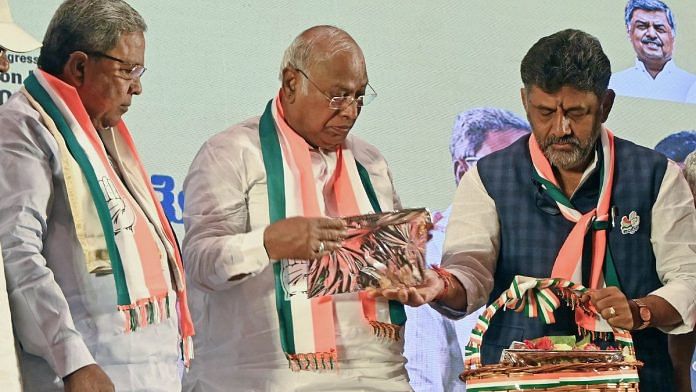All elections are a must-win for political parties. In the case of Karnataka, it is perhaps more true than elsewhere. For the BJP, it has been its southern outpost. To lose when it is spending huge political capital in trying to establish itself in Kerala, Telangana and Tamil Nadu would be a disaster. For the Congress too, it is their only hope in the South, anything short of an outright victory could see the party fall apart and probably disappear like elsewhere. And for the Gowda-led JDS, they must remain kingmakers, holding the balance of power or also risk becoming irrelevant.
So far, the opinion polls are pointing to a Congress victory. From a narrow majority to an overwhelming one, where it could get 150 seats in the 224-member House. The BJP seems burdened by corruption (40 per cent CM), internal dissension, and defection. But even in April 2018, there was an air of BJP’s decline, yet a major Modi blitz in early May helped change the game enough for them to emerge as the largest party with 104 seats. The table below highlights how much the BJP gained during the campaign. The Modi blitz is on again now.
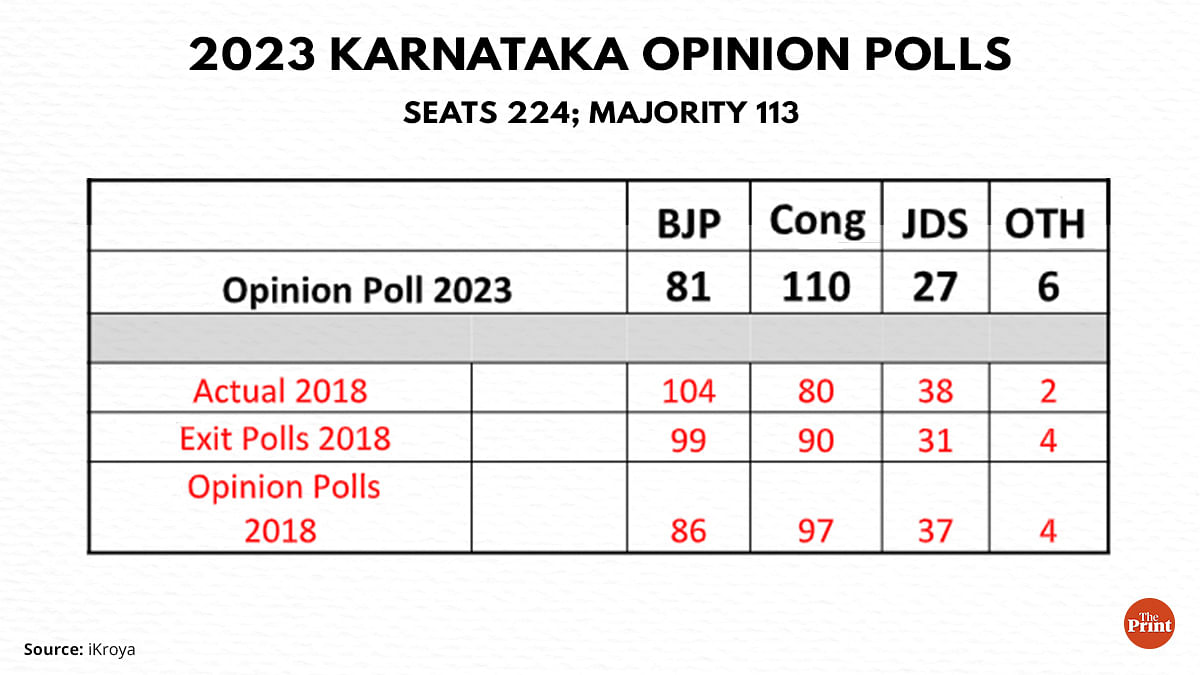
Straight fights and narrow margins
The BJP starts with some basic advantages. First, it has more seats with large majorities to defend, and in straight fights with the Congress, it wins 63 per cent of the seats (see table on Straight Fights below). Added to that, is the fact that BJP did better than the Congress in the 35 seats that have had low margins in the last three elections Finally, the BJP drive in the Old Mysuru region, especially in infrastructure, may help diminish the family-run JDS.
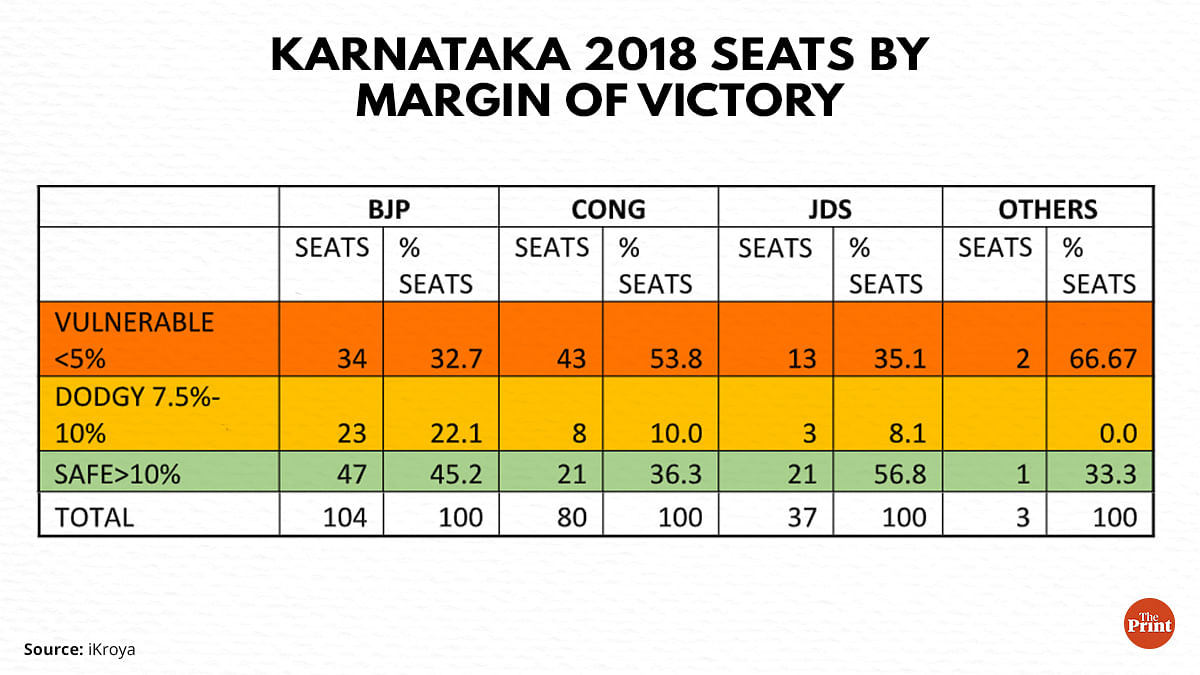
In Karnataka, 41 per cent of seats could be termed vulnerable — those with margins of less than 7.5 per cent. These seats are susceptible to swings under four per cent.
The Congress has the most of these ‘vulnerable’ seats, 43 of them, or more than half the seats they hold. The BJP has a ‘safe’ bank of 47 seats. It really needs to hold the seats if it has to stay in power. That said, if the opinion polls are correct, and a five per cent swing to the Congress were to fructify, the BJP could lose up to 57 seats and push the Congress to a comfortable 130 plus seats.
Almost 60 per cent of seats in Karnataka were straight fights in 2018.
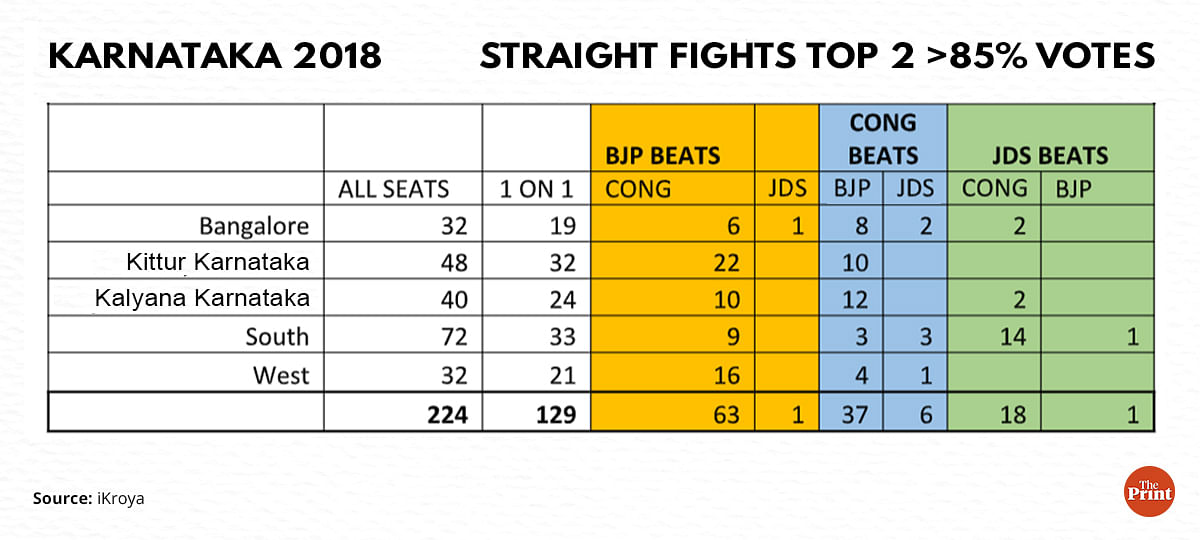
Here again, the BJP shows its strength by winning almost 50 per cent of them, while the Congress was bloodied by both the BJP and JDS. However, there is hope for the Congress, in that if there is a reasonable swing in its favour, say three to four per cent, it could pick up 30 plus seats.
Of the 92 ‘vulnerable’ seats, 74 of them are in the regions of Kittur Karnataka (previously Bombay Karnataka), Kalyana Karnataka (previously Hyderabad Karnataka) and the South (including Old Mysuru). Of these, the former two should worry the BJP.
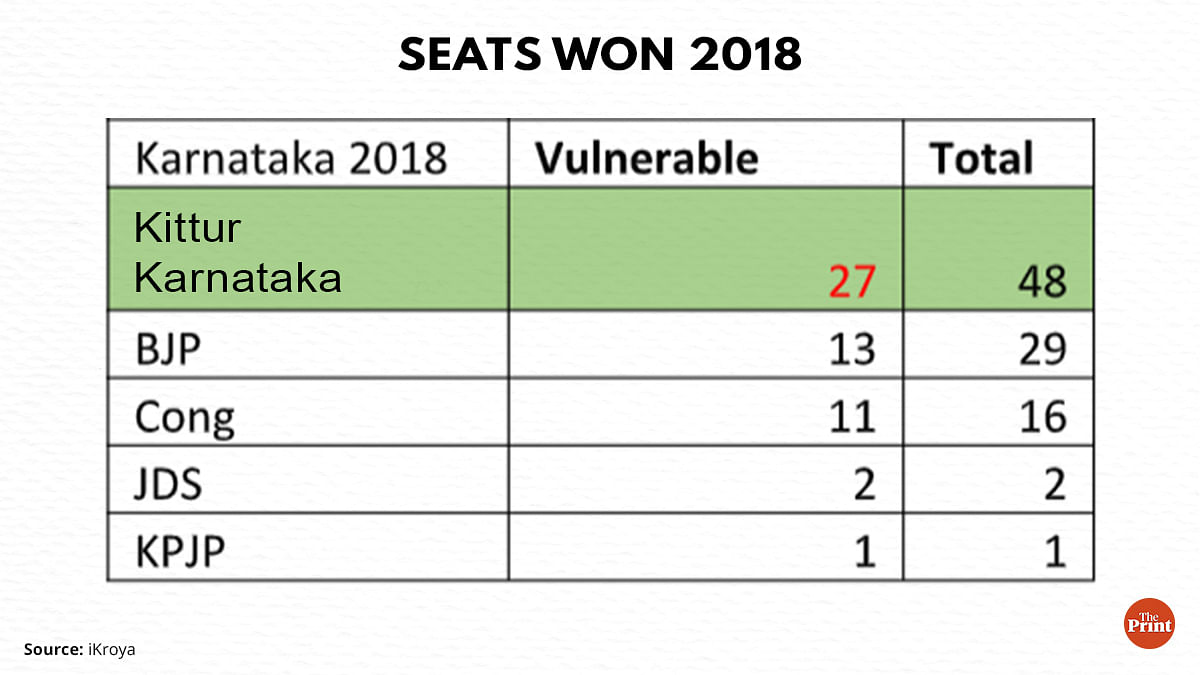
Kittur Karnataka is the BJP’s Lingayat stronghold. Former CM Jagadish Shettar, who defected from the BJP to the Congress is an influential leader from this region. He claims that his switch could cost the BJP in 25 seats. At least 13 BJP seats here are in the high-risk zone, even if a small percentage of voters defected that could almost halve their total. And with 66 per cent of the seats being straight fights with the Congress, Shettar’s defection could be telling.
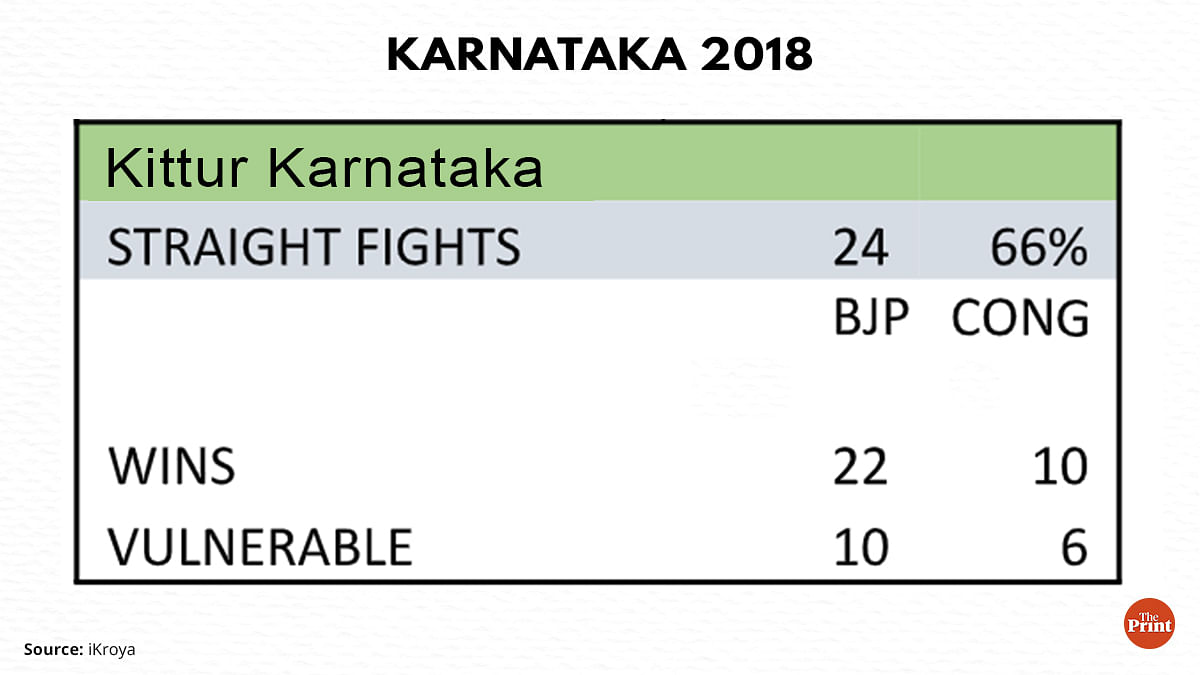
Similarly, in Kalyana Karnataka the BJP sits on an uneasy wicket. Congress held on to most of the gains it made in this region in 2013. This is despite the fact that former CM BS Yediyurappa who left the BJP in 2012 and split the BJP vote in 2013 was back into the fold by the next Assembly election.
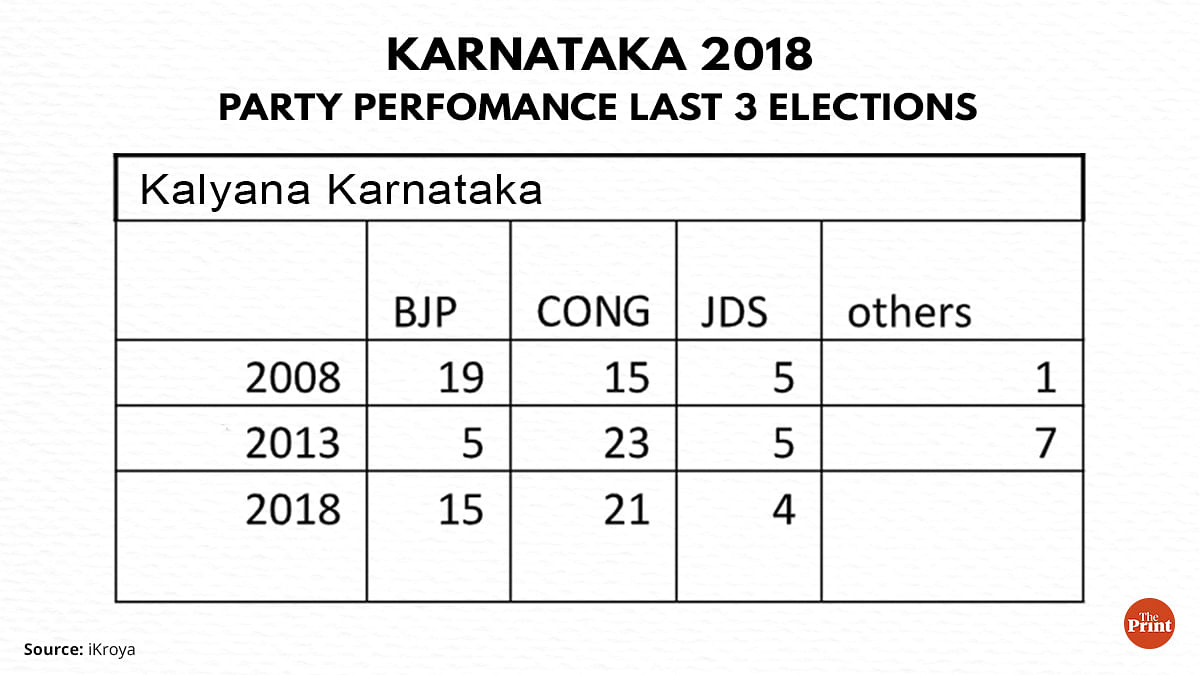
The Congress has only small majorities in more than half of the seats, but they are probably confident of retaining them as they did in 2018. Especially now when the mood seems to be against the BJP. Of the 19 vulnerable seats in the region, 13 were straight fights. If they remain as such, the Congress could have the advantage.
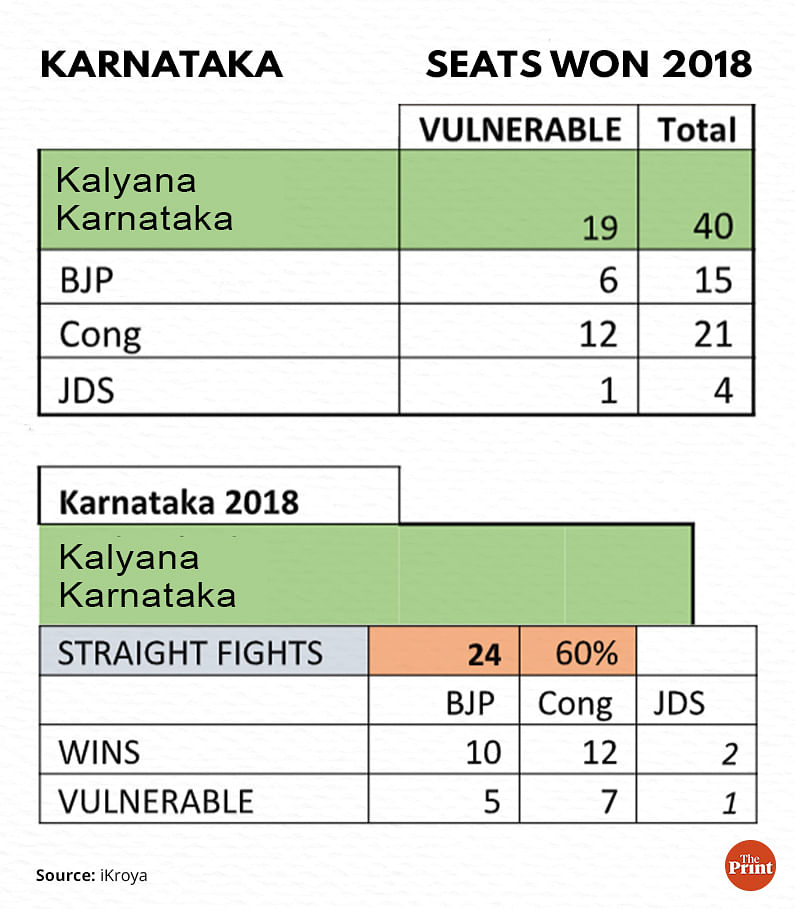
Biggest battleground
The biggest battleground in Karnataka is the South, with 72 seats. The region is home to Old Mysuru, a stronghold of the JDS due to the large Vokkaliga population. Its performance here has made it the kingmakers of Karnataka. And even though it got a bloody nose in the 2019 Lok Sabha elections, the expectation is that in an assembly election local issues and loyalties will play a key role.
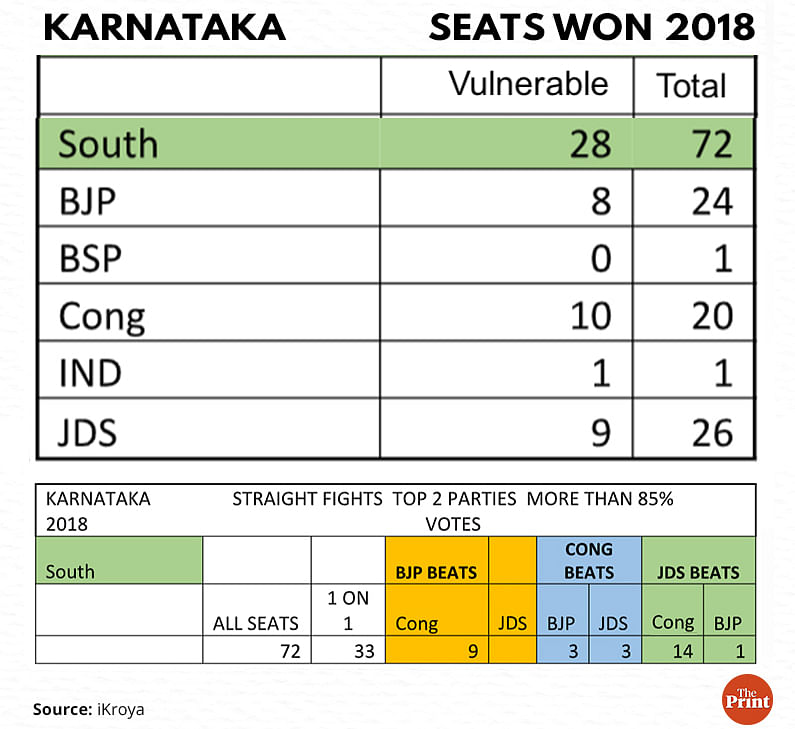
The Congress once again loses to both the BJP and the JDS in straight fights. Its strength was in winning three or more cornered fights.
This could be an advantage this time round as the BJP is making a strong push, having invested a lot in infrastructure in this area — the Bengaluru-Mysuru highway and Vande Bharat Express. It believes that this double-engine development will find resonance with the voter. With both the Congress and JDS having a large number of vulnerable seats (19 between them) the BJP is hoping to make inroads here.
The question is who is the BJP likely to gain votes from? If it is from the JDS then the Congress could be a major gainer. And with both its chief ministerial candidates — Siddaramaiah and DK Shivakumar — from this region, the Congress needs to perform better than before in this region to get a workable majority.
Finally, in a close fight, everything could come down to 35 seats that in the last three assembly elections have had margins of less than 10 per cent. Here the BJP seems to be a bit weak, with 17 seats at stake.

Not only are the margins small but the seats are highly volatile. Over three elections only six seats have been won consistently by the same party And since the BJP holds the largest number of these seats, they are probably at the greatest risk of losing them. Their retention record is quite poor.

With the Union home minister Amit Shah reducing the BJP target from 150+ to 130, the BJP obviously knows that things aren’t as rosy as they would like them to be. The fact that no party has won consecutive elections in the last 35 years, would also suggest that change is possible.
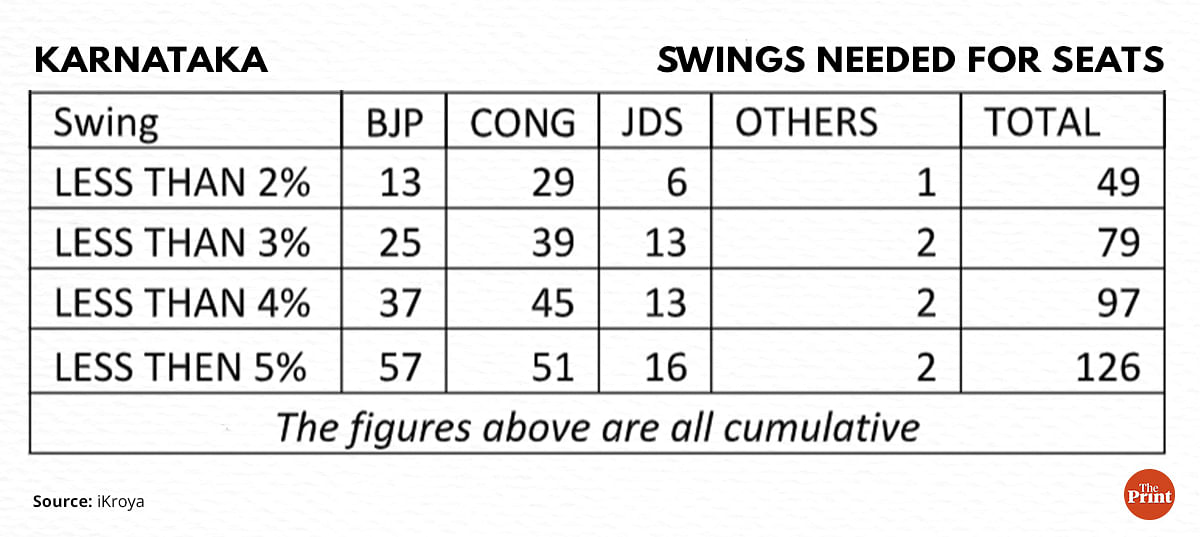
And yet for the Congress to manage an unassailable win, it would need a big swing in its favour, of over 5 per cent to get to the target of 130 plus.
Anything less would leave a hung house. For the BJP, that would open the door to more horse trading. Of course, a very small swing in BJP’s favour would give them a majority.
All data has been sourced from iKroya; special thanks to Namrata Gupta and Eram Durrani for facilitating this. All errors in analysis are mine.
Ishwari Bajpai is a journalist. He was a senior editorial advisor with NDTV from 1996-2018 and has been involved in television election coverage since 1984. He tweets @onlybaj.
(Edited by Theres Sudeep)


